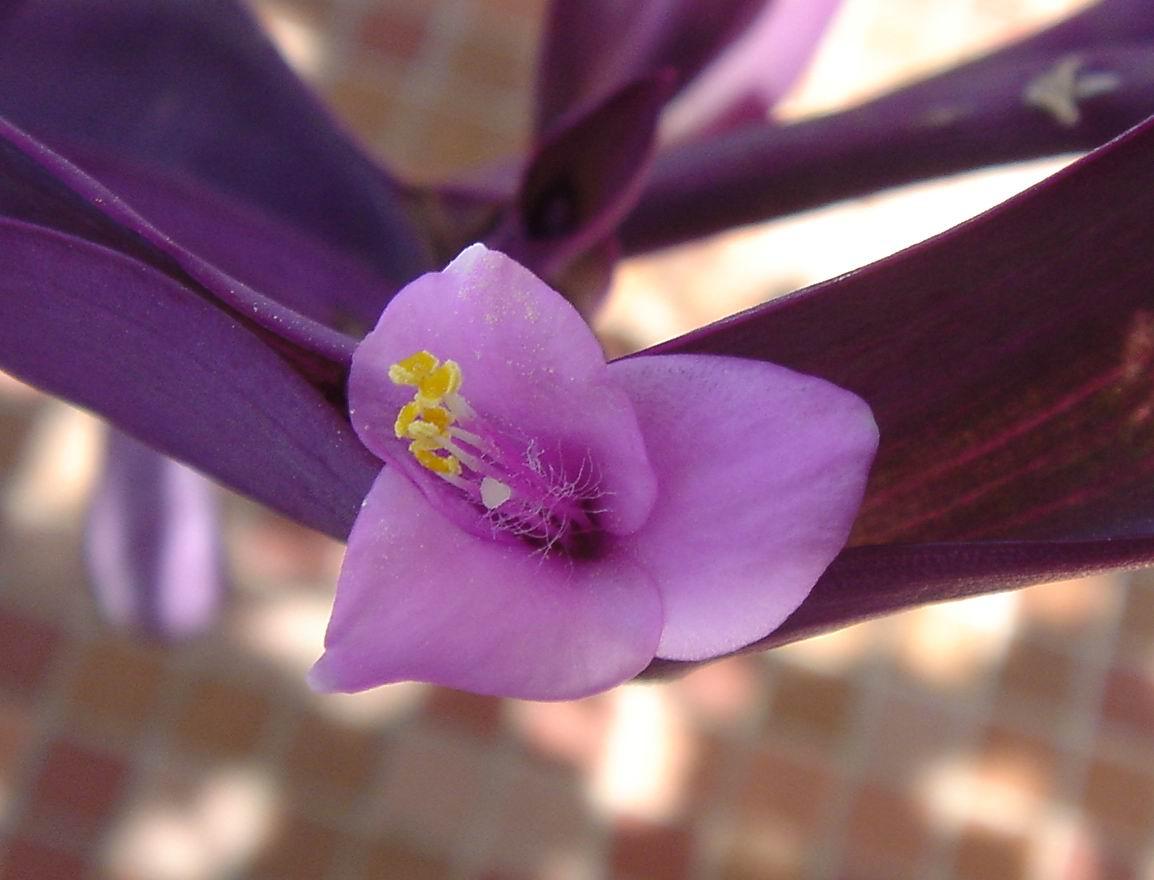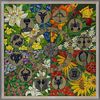Flower EncyclopediaENTER THE WORLD OF FLOWERS |
Other News
Tradescantia
Category: Decorative flowering
12 Feb : 13:09
To view pictures click on them














 Originates from tropical areas of North America. There are about 90 species. The name "tradeskantsiya" appears in the XVIII century. It is named after the English gardener John Tradeskant who has lived in the early XVII century. He founded one of the first botanical gardens and the National History Museum in London. He was a gardener of the Duke of Buckingham.
Originates from tropical areas of North America. There are about 90 species. The name "tradeskantsiya" appears in the XVIII century. It is named after the English gardener John Tradeskant who has lived in the early XVII century. He founded one of the first botanical gardens and the National History Museum in London. He was a gardener of the Duke of Buckingham.If you look closely at raztenieto will be able to see that in a long stem, densely covered with leaves, they are so interrelated that it is difficult to separate from one another and is difficult to find the beginning or end of a branch. Leaves in older plants reach a length of 7 - 8 cm in the wild these plants are almost never grown on trees. They pochvopokrivni. Very quickly cover new areas with Widespread and root stalks. Love the rich fertile soil.
In indoor conditions can be used to fill large pots with other plants.
Species:
Tradescantia albiflora
Rodina - the tropical areas of South America. One of the most frequent and informal plants. It is a long oval leaves with a sharp peak. The leaves are soft, shiny and bright green. Around the base of a leaf plates - long thin hairs. Rarely blooms with small white flowers. Suitable for growing in hanging vases to decorative walls, windows and columns.
Tradescantia albiflora albo-vittata - Large blue-green leaves covered with white
Tradescantia albiflora laekenensis - green leaves with a bright purple and white stripes
Tradescantia blossfeldiana Milb.
Comes from Argentina. Herbaceous plant with creeping stems that form a curtain. The top of the leaves are green or purple. Blooms are numerous at the end of tsavtezha Lyulyakovo and pink in color.
Tradescantia navicularis Ortg.
Homeland, Peru. Blooms are red.
Tradescantia fluminensis Vell
Rodina - humid subtropical Brazil, Uruguay and Paraguay. Herbaceous plant with creeping stems. Leaves are egg-shaped, dark green above and below purple-red, smooth on both sides. Juice and paint. Blooms are white and numerous.
Tradescantia fluminensis "Quicksilver" - a dark mossy green and silver leaves
Tradescantia pallida - with downy leaves and purple stems and pink flowers
Tradescantia aurea - yellow leaves with green stripes
Cultivation:
Location:
Can be stored in a shady spot and bright, but bright sun the leaves turn yellow and lose its decorative effect. It grows in warm and cold rooms. Belotsvetna Tradeskantsiya can tolerate temperatures up to 6-10C, but other types of temperature should not fall below 12-15C. They are ideal hanging plants. Declined in autumn and sprout again in spring. If a court is covered with pine branches.
Irrigation:
Be especially careful with watering in winter. Watering is plenty. If the temperature is low, then reduce watering to no rotten roots. Before the next watering the soil should be slightly moist. When the stems become too long, may at any time to move on and be used as cuttings. They prefer rich soil in moist woods, thickets and gardens.
Feeding:
The more you nurture plants, the faster they grow. As with watering, everything depends on the temperature. At temperatures greater than 18 degrees, growth is intense and the need for feeding increases. At lower temperatures grow more slowly.
Humidity:
Tradeskantsiite air like humidity. Better reflects their frequent and atomizing water into the pad for some time, but not required.
Propagation:
You can do throughout the year with cuttings 10 cm in length distinction is spring, summer and autumn. Rooting may occur in water or soil.
The smallest may be cutting a piece of stem with two knots. It is planted in the soil by burying only the lower unit. It grows roots. From the upper unit shoots grow. To maintain high humidity pot can be put into polyethylene packet (but not required) and to refer the scattered light.
Rooting is doing well at about 20 degrees. Going for several days. When new leaves appear, you may remove the foil.
Roots easily in water and form. They are sufficiently resistant to oxygen deficiency. Therefore suitable for tradeskantsiite hidrokultura.
Problems:
- If the leaves are rare - with great distances between them, the reason may be lack of light, humidity, or feeding (the time it is normal to bare stems and distort - the plant has been renewed);
- If the colors fade and colorful leaves are almost entirely green - insufficient light;
- If the stems are soft and the leaves gleamed yellow and mottled - insufficient moisture;
- If the edges of the leaves dry - too dry air or dust mites.
Pests:
- Mites;
- Scale insects.
Category: Decorative flowering
Comments are turned off for this item0
| rich fertile soil national history museum herbaceous plant duke of buckingham thin hairs |
You must be logged in to make comments on this site - please log in, or if you are not registered click here to signup























































